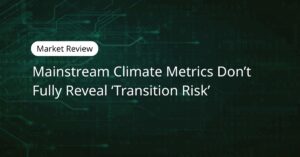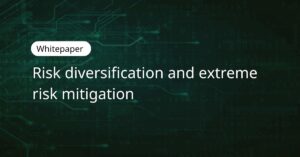We provide investors with the technology to independently analyze and construct equity portfolios
Asset Owners
..
..
Gain independent insight to assess managers, analyze risk and sustainability claims, and test portfolios; forming your own conviction with confidence.….
Asset Managers
….
….
Access all essentials of risk management and portfolio design in one place. Build differentiated, research grounded portfolios and communicate with confidence...
Investment Consultants
/]
Strengthen mandate reviews with integrated analytics; validate strategies, set clearer expectations, and give clients an independent second opinion...
Strengthen mandate reviews with integrated analytics; validate strategies, set clearer expectations, and give clients an independent second opinion...
Wealth Managers
..
..
Deliver institutional-grade equity insight without extra resources; explain portfolios with clarity, build trust, and scale personalized advisory with confidence...
Rooted in EDHEC research – advancing the science of equity investing.
WHITEPAPER
A Question of Ethics? Climate Alignment in Equity Portfolios
Our Capabilities
Delivered in a platform that’s transparent, fast, and easy to use, no black boxes, no complex setup.
Scientific Portfolio in 3 minutes
Serving Professionals Across the Investment Ecosystem

The Bridge Between Academic Rigor and Practical Portfolio Insights
Ready to Strengthen Oversight?
Experience the Scientific Portfolio Platform firsthand — self-register today or request a tailored demo to see how it strengthens your investment process.
From Framework to Function: Inside Included Capabilities
01
02
 03
03
Risk Management
Cover the Standards of risk management with confidence by knowing your exposures to factor risks, sector risks, and macroeconomic risks; identifying drivers of specific risks; measuring diversification and enabling risk budgeting; measuring extreme risks through advanced statistics; and measuring extreme macro and climate risks through scenario analysis.
Performance Insights
Explain performance through the right lens, and simulate beyond the sample by breaking down performance according to a fundamental factor model, a sector factor model, or a currency factor model; identifying drivers of unexplained performance; measuring alpha within a robust and flexible framework; putting realized sample returns in perspective through a what-if analysis; and projecting beyond the sample through long-term multi-factor simulations.
04
ESG Integration
Assess sustainability through ESG screening templates covering different levels of requirement; customize ESG screening according to your investment policy; measure the ex-post impact of excluding securities on the risk management, performance, and climate dimensions; and minimize risk deviations imputable to ESG screening.
 03
03
Climate Risks and Impact
Bring clarity to climate exposure, risk, and alignment by knowing your exposure to the transition risk factor and your allocation to brown stocks, two complementary measures of climate risk; quantifying potential losses imputable to the climate transition through scenario analysis; measuring the carbon emissions your portfolio is accountable for and attributing the differences between your portfolio and its benchmark; and assessing the alignment of your portfolio with climate objectives through a scenario analysis considering emissions trajectories and green revenues.
05
Results-Driven Portfolio Construction
Put analytics and optimization into a virtuous feedback loop where insight drives allocation by assessing any starting portfolio through our risk management, ESG integration, and climate solutions; defining results-driven objectives and identifying feasible constraints based on our independent analysis; experimenting with the feedback loop between live analysis and portfolio construction; intuitively exploring the interactions between objectives and constraints; validating your results according to your investment guidelines including risk budgeting, extreme risks, climate risks, ESG integration, and climate alignment; and simulating your results out of sample thanks to our scenario analysis.
See How You Can Benefit from Scientific Portfolio – One Use Case at a Time.
Leverage Scientific Portfolio’s capabilities and follow along with a practical use case that is designed to extract meaningful insights for a specific investment objective. This documentation is exclusively available to platform users. Request access to the Scientific Portfolio platform now to get started.
Go beyond past performance and enhance your fiduciary oversight with risk analytics
Confidently exercise your fiduciary responsibility with our factor-based performance and risk analytics. Save time validating investment strategies and overall equity allocations, easily detect drifts and concentrations, and anticipate extreme risks and vulnerabilities to macro regimes.
Start Your Access to the Scientific Portfolio Platform
Gain instant insights into your portfolios across risk, performance, climate, and ESG dimensions.
Leverage advanced analytics to enhance risk/return efficiency, manage sustainability impact, and align with climate objectives.
"*" indicates required fields




